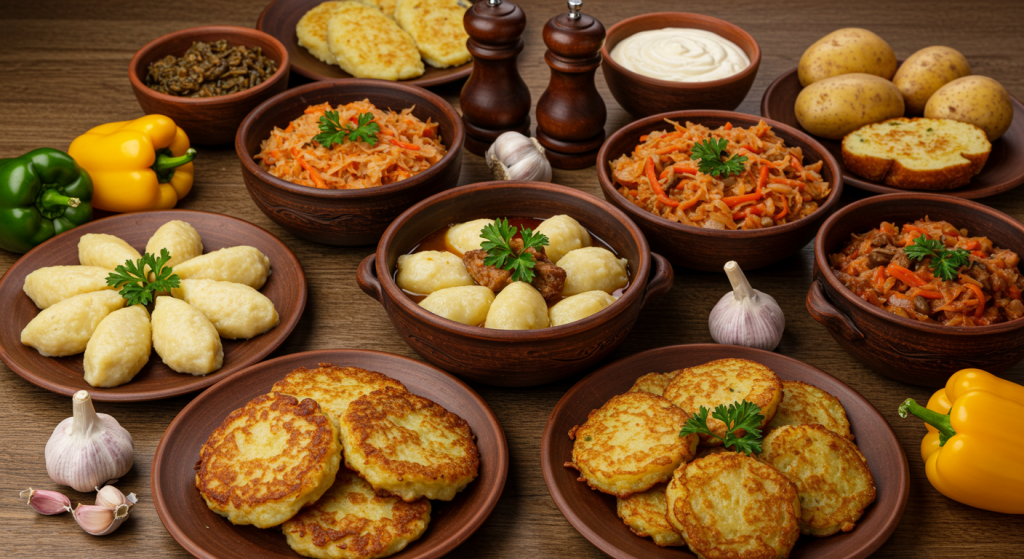
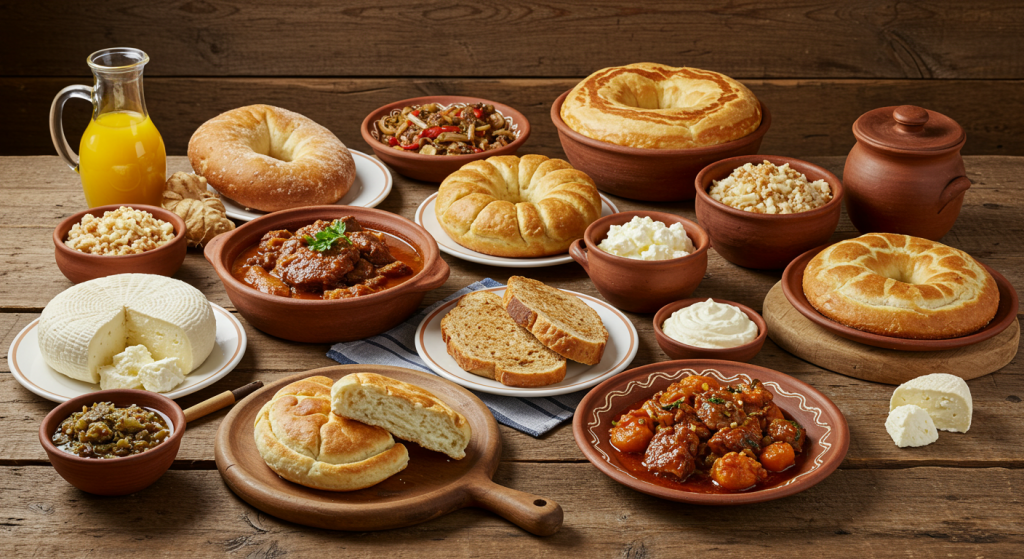
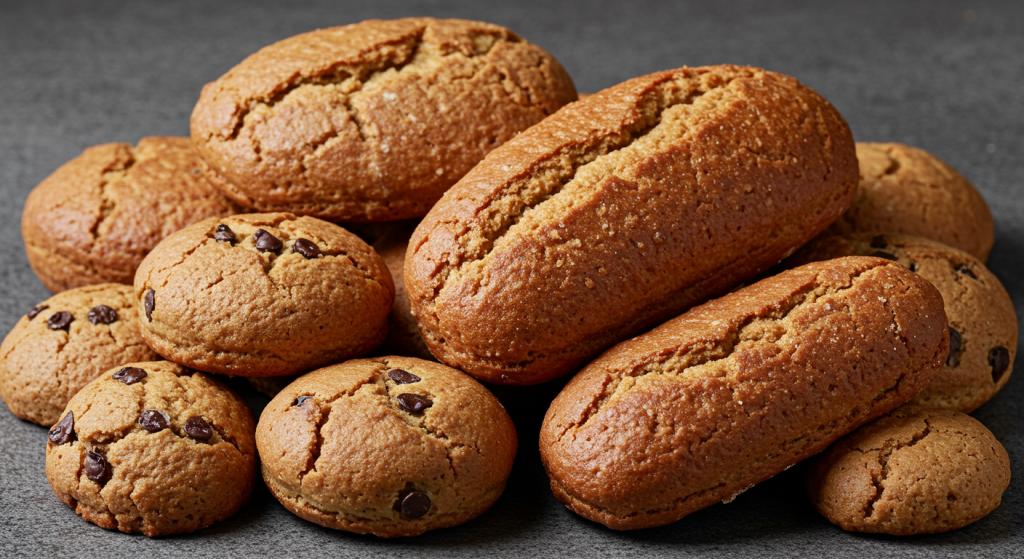
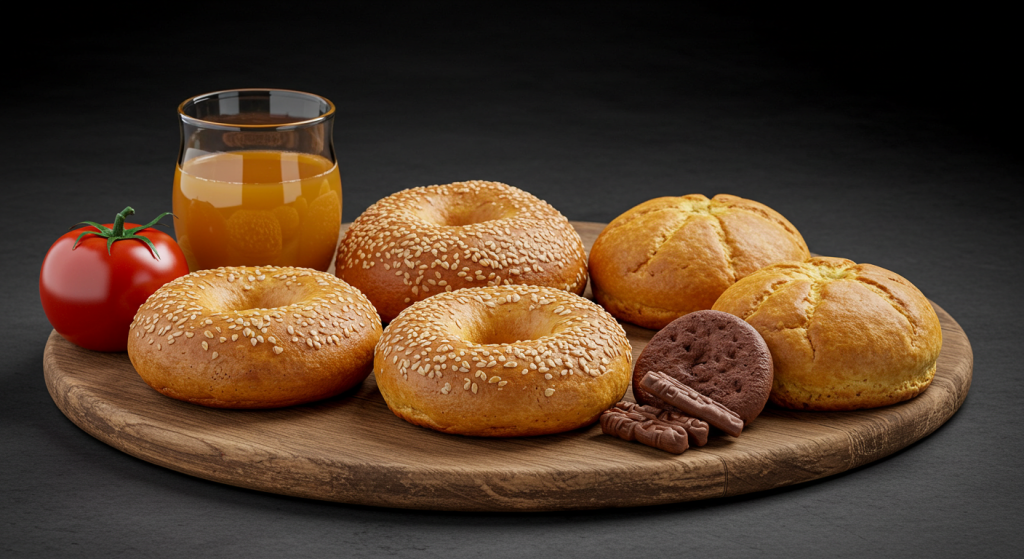
Slovakia, nestled in the heart of Central Europe, is a country rich in history and culture, and its culinary scene reflects this vibrant heritage. Slovak food is a delightful mix of flavors and traditions, influenced by neighboring countries such as Hungary, Austria, Poland, and the Czech Republic. This article delves into some of the most iconic dishes that define Slovak cuisine and highlights the unique ingredients and cooking methods that make it special.
One of the most well-known Slovak dishes is bryndzové halušky, a hearty meal that represents the soul of Slovak cooking. This dish features potato dumplings (halušky) blended with bryndza, a soft sheep cheese that is aromatic and tangy. The dumplings are typically garnished with crispy bacon or fried onions, offering a rich contrast to the creamy cheese. It’s a staple in Slovak households and is often enjoyed with a side of sauerkraut or a small serving of sour cream.
Another beloved dish is kapustnica, a traditional sour cabbage soup that warms the heart, especially during the winter months. This flavorful soup combines sauerkraut, smoked meat (often sausage or ribs), and a variety of spices, creating a complex and comforting flavor profile. Some variations of kapustnica even include wild mushrooms or dried plums, showcasing the diversity of Slovak culinary traditions.
For those with a sweet tooth, Slovakia offers delicious desserts that highlight the region’s agricultural bounty. Trdelník is perhaps the most famous, a pastry made from rolled dough that is wrapped around a stick and grilled over an open flame, then topped with sugar and walnuts. While it has become a popular street food in many countries, its roots can be traced back to Slovakia and its neighbor, the Czech Republic.
Another traditional dessert is slivkový koláč, a plum pie that represents the abundance of fresh fruits in the Slovak landscape. This pie features a buttery crust filled with sweet, juicy plums, often complemented by a sprinkle of sugar or a hint of cinnamon. It is commonly served during family gatherings and festive occasions, symbolizing the importance of family and shared meals in Slovak culture.
When discussing Slovak beverages, one cannot overlook Slovak wines and the famous Borovicka, a juniper-flavored spirit akin to gin. Slovakia has a rich viticulture, especially in regions like Tokaj and the Little Carpathians. The local wines are often characterized by their crisp acidity and fruity flavors, making them perfect accompaniments to traditional Slovak dishes.
Seasonal ingredients play a vital role in Slovak cuisine, with many recipes rooted in nostalgia and family tradition. Home gardening remains popular, allowing families to incorporate fresh vegetables, herbs, and fruits into their meals. Celebrations and festivals often highlight local specialties, emphasizing the cultural significance of food in community bonding.
In conclusion, Slovak food is a delightful fusion of flavors that brings together the agricultural richness of the land, cherished traditions, and a history of culinary influences. Whether you’re enjoying hearty halušky on a chilly evening or savoring a slice of slivkový koláč at a family gathering, each dish tells a story of Slovakia’s rich cultural tapestry. Exploring Slovak cuisine promises not only a culinary adventure but also an insight into the heart and soul of the Slovak people.
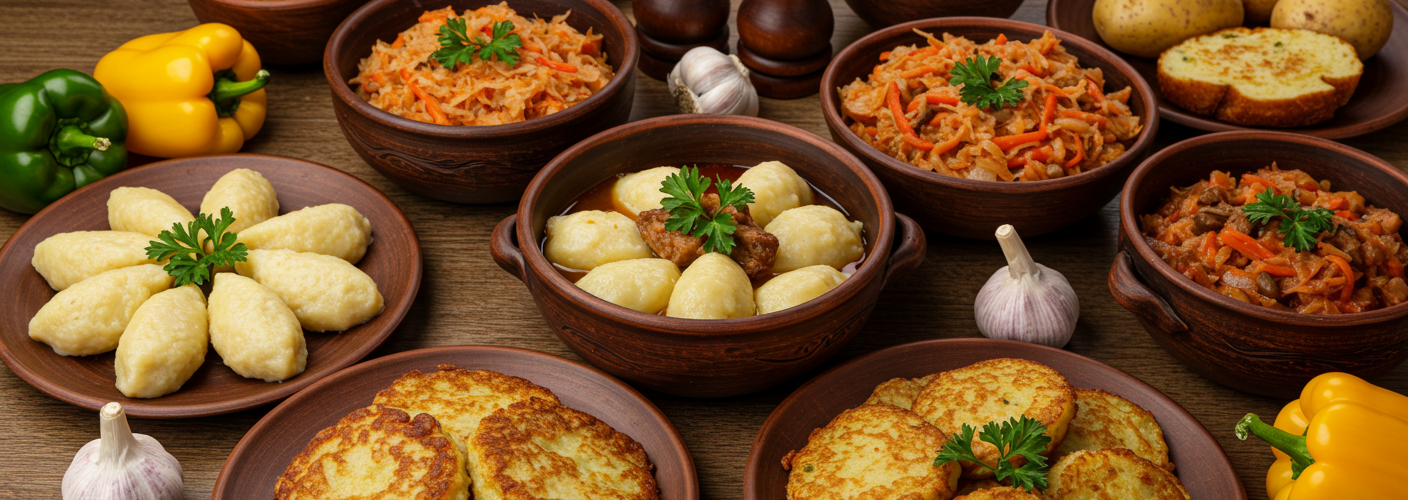



Add comment